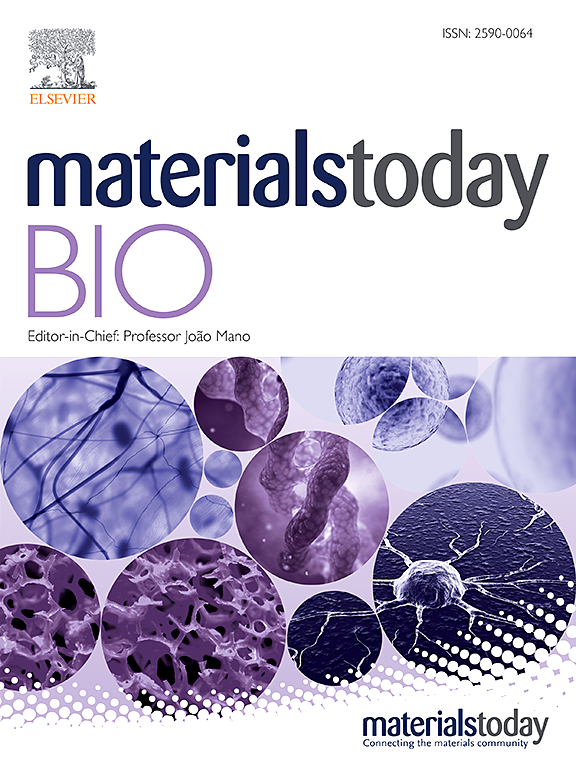Biointegration of soft tissue-inspired hydrogels on the chorioallantoic membrane: An experimental characterization
IF 8.7
1区 医学
Q1 ENGINEERING, BIOMEDICAL
引用次数: 0
Abstract
Soft scaffold materials for cell cultures grafted onto the chorioallantoic membrane (CAM) provide innovative solutions for creating physiologically relevant environments by mimicking the host tissue. Biocompatible hydrogels represent an ideal medium for such applications, but the relationship between scaffold mechanical properties and reactions at the biological interface remains poorly understood. This study examines the attachment and integration of soft hydrogels on the CAM using an accessible ex ovo system. Composite hydrogels of polyvinyl alcohol and Phytagel were fabricated by sterile freeze-thawing. CAM assays, as an alternative to traditional in vivo models, enabled the evaluation of the compatibility, attachment, and biointegration of hydrogels with three distinct compositions. The mechanomimetic properties of the hydrogels were assessed through cyclic compression–tension tests, with nominal peak stresses ranging from to kPa in tension and to kPa in compression. Mechanical attachment to the CAM was measured by pull-off tests after five days of incubation. On the first day, the interface strength was similar for all hydrogel compositions. On day , softer hydrogels showed the greatest increase (), followed by intermediate hydrogels (), while the denser hydrogels showed negligible changes (). Histological analyses revealed cell infiltration in % of soft, % of intermediate, and % of dense hydrogels, suggesting that softer hydrogels integrate better into the CAM by facilitating cell migration and enhancing interface strength. Chicken embryo survival rates and cytotoxicity assays confirmed the biocompatibility of the hydrogels and supported their potential for use in soft, hydrated three-dimensional scaffolds that mimic tissue environments in dynamic biological systems.
Statement of significance Current research on soft scaffold materials for cell cultures often overlooks the critical relationship between mechanical properties and biological integration of these materials with host tissues. Although hydrogels, as soft porous materials, hold promise for creating physiologically relevant environments, the mechanisms driving their attachment and biointegration, especially on the chorioallantoic membrane (CAM), remain largely unexplored. This study addresses this gap by investigating the interaction between soft hydrogels and the CAM, providing valuable insights into how material properties and microstructure influence cellular responses. Our findings emphasize the importance of understanding these dynamics to develop biocompatible scaffolds that better mimic tissue environments, advancing applications in three-dimensional cell cultures on CAM assays and other biological systems.

求助全文
约1分钟内获得全文
求助全文
来源期刊

Materials Today Bio
Multiple-
CiteScore
8.30
自引率
4.90%
发文量
303
审稿时长
30 days
期刊介绍:
Materials Today Bio is a multidisciplinary journal that specializes in the intersection between biology and materials science, chemistry, physics, engineering, and medicine. It covers various aspects such as the design and assembly of new structures, their interaction with biological systems, functionalization, bioimaging, therapies, and diagnostics in healthcare. The journal aims to showcase the most significant advancements and discoveries in this field. As part of the Materials Today family, Materials Today Bio provides rigorous peer review, quick decision-making, and high visibility for authors. It is indexed in Scopus, PubMed Central, Emerging Sources, Citation Index (ESCI), and Directory of Open Access Journals (DOAJ).
 求助内容:
求助内容: 应助结果提醒方式:
应助结果提醒方式:


